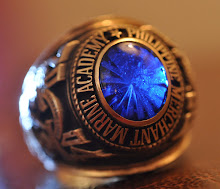Classes of fire and how they can extinguish.
Wednesday, February 27, 2008
There are different kinds of fire aboard the vessel and here in land. Every fire have there own weakness or extinguisher. Fire is a useful in our lives. How we can cook food if there is no fire? How we can mold ceramic's and metal without the help of fire? Sometimes fire is our enemy, fire can kill people, and destroy life.
There are 4 classes of fire namely Class A, B, C, and D fires. Class A fires are composed of combustible materials. A combustible material leaves ashes when it burns. Examples of this are paper, wood etc. They leave ashes when they burn am I right? By the way Fire has 3 sides. Every side is composing of an element. Namely Oxygen, Heat, and Fuel. Fire needs this three side of a fire triangle to produce a chemical reaction that starts fire. Oxygen the air we breathe, In the atmosphere there are 21% of oxygen. Like us fire need 21% oxygen to create a chemical reaction. If the percent of oxygen will be 10.8 to 11% below there will no combustion exist to the fire, because fire cannot breathe because of lack of oxygen to his surroundings?

Fuel in short Pangatong. In every fire there is pangatong na tinatawag. Thats the use of fuel in Fire triangle. Wood, papers, gasoline that is the pangatong or fuel in fire triangle. I know that the wood and paper are belong in the Class A fire (combustible materials) But in the Fire triangle paper, wood etc (leaves ashes are belong the Fuel side of the fire triangle).
Heat is the one who give ignition to the fire triangle of the fire. With proper Fuel, Oxygen and a spark fire will be created at once. If you remove one of the side of the fire triangle fire will not be started or there will be no fire at all. Example for this is a room, the room is on fire, inside the room there is composition of fire triangle. 21% oxygen, fuel, and heat. If you reduce the percent of oxygen by closing all boundaries of the room. Oxygen will below to 11%. The fire cannot breath and the fire will be stop at no time. If you cool down the fire by means of water the temperature of the room will be decrease and the result the fire will be stop again.

Class B fire include all liquids that emits vapors. In this drawing the k is included to the class b fire. I know that is not a flammable liquid but it is a liquid and while burning it’s include to the class b fires. I know you will ask again the wood, paper etc is fuel. Yes I know there are fuels in the fire triangle but in classes of fire they will be in class a fire because they are not liquid and do not emit flammable vapors. The vapors of a flammable liquid that is the one burned by fire not the liquid. In cooking oils because of very hot temperature it emits hot vapor but not flammable vapor that attracts the fire to react it and create a chemical reaction. The fire extinguishing for class B fire will be the foam. Foam is a chemical bubbles that mix in the water. The bubbles stop the joining of the oxygen and the heat, fuel and it is called smothering. Foam is applied by bouncing to the side (banda in tagalog). It cannot be applied in direct because fuel will be disturbed and it will create a massive spread of fire.

Class C fire is composed of electrical fire. Short circuit is the best example of this class fire. The extinguishing agent for this fire must be a non conducting extinguisher. The best agent will be Dry powder extinguisher. Its particles are non conducting to electricity. Its stop the oxygen mixing in the electrical fire. If you use water and foam for this type of fire you will be getting electrical shock because the two extinguishing agent is conductor to the electricity. Another type of extinguishing agent that can use in the electrical fire is the Carbon dioxide. It can use also to Class A and Class B fire. It minimizes the oxygen on the fire and its cooling agent too. The disadvantage of Carbon Dioxide to the Class B fire is allow the re flash of the fire. Carbon Dioxide is use in ship in case of fire. It is use in the engine room space. Other type of agent that can put down the electrical fire is the Halon but the IMO (International Maritime Organization) restrict the use of the Halon because it destroys the Ozone layer.

Class D fires, the best example for this class is the Magnesium, Titanium, Lithium. The fire extinguishing agent for this kind of fire will be the Dry chemical. It’s same as dry powder but when you use dry powder to the burning metal it will have a violent reaction the metals. Like the water and the foam, they will be a violent reaction to the burning metal when you apply this kind of agent.
So... now we know what the classes of fire are and how they will extinguish properly.







0 comments: to “ Classes of fire and how they can extinguish. ”
Post a Comment